Bringing the Climbing Commons to Stroud
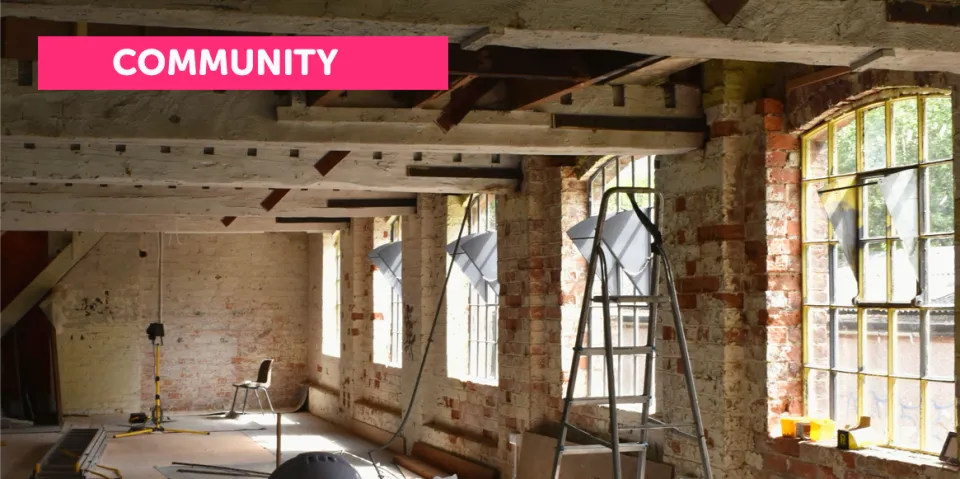
by Alyssa Pearce | Amplify Stroud
June 2025
Ever since the dawn of the sport on the Olympic stage in Tokyo (2021) climbing seems to have taken the world by storm. Now in Stroud we are about to get our very own climbing gym at the beautiful Brimscombe Mill which is also home to the Long Table and the Bike Drop.
I was lucky enough to speak to Chik Shimasaki about the Climbing Commons and to take a good look around the site.
What was the initial idea behind the project?
I work for Stroud Commons and they have several interesting, innovative models of bringing assets into community ownership without debt because debt is a sure way for wealth to be extracted out of communities.
Iif you look at mortgages, interest will be close to double of the initial loaned amount so, by cutting that out you can start to do a lot of very interesting things.
When I heard about the idea of a “use-credit obligation,” which is where communities buy vouchers that are denominated in the useful thing that you want to build — climbing gyms kind of do that already, you buy a monthly or annual pass which funds the operation of the business — I thought that we might be able to apply this model to Stroud, there isn’t a climbing gym nearby and maybe if it’s small enough and enough people in Stroud wanted it we could crowdfund it.
Use-Credit Obligation — an example

I spoke to a few people and we got together to kickstart the processs. It took a lot more research than we imagined, the first thing we did was come to Brimscombe Mill and talk to Will who showed us around a shipping container that was there, so we wondered how we could maybe stack them or fit it inside and then ship it to different places and take it out to schools — you could have a workshop inside where you could make the climbing holds so you don’t have to buy them.
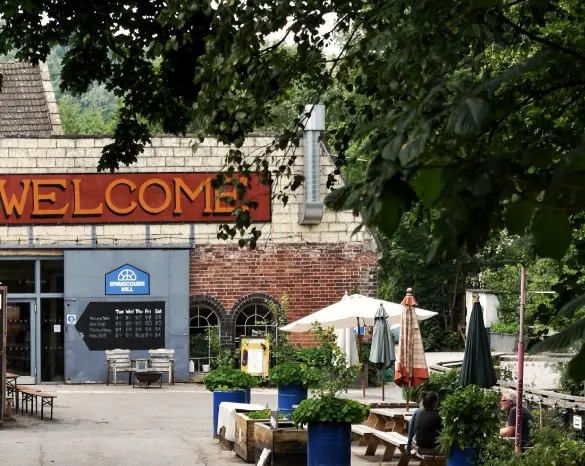
The first thing we thought about was our slogan “Accessible Climbing for All” because we have all experienced the challenges of paying high fees, we love the sport but we know that not everyone is able to afford it.
Now that I’m a father of three I don’t have the time to travel to climb three times a week and it’s very expensive so the climbing in my life has just kept on diminishing.
There are enough people in Stroud that feel this way and would like somewhere local to climb at an affordable price, and then have 270 Climbing close by where you might be able to have a joint membership so you can train here and then put it all into practice at 270.

From talking to a lot of people it became very clear that a small model is not good enough and it has to be at a certain scale to make it viable but we had to work out what that scale was, how to be insurable but also operationally efficient so that we can lower the price. This was the turning point for us, we asked ourselves ‘does it need to be that big in order to function?’
Most of us have climbed in keycard access gyms in Europe, Japan and other places but there are only two of these in the UK, so we tried to find out how they were insured.
This led us to about six months of negotiations with various insurers to develop a ‘super-induction’ where we can bring the members up to the standard of floor walkers so that they are able to assess the risk and mitigate it to the level of a trained staff member, meaning that we don’t have to staff the facility 24/7 bringing the cost down.
It all starts with us bringing in a Mountaineering and Climbing Instructor to assess the risks and to train the core team to deliver the super-induction — this is a site specific training — once the core team are trained up then we can deliver the induction process meaning that you can come in during the unstaffed hours with the membership.
Climbing Gyms can be very exclusive, how will the Climbing Commons be different?
One of the things we’ve heard from the bigger gyms is that it can become quite difficult to build a sense of community: people will come in with their headphones on or come in small groups, and a lot of the older generation miss the smaller gyms where they knew everyone and were all supportive.
Because of its locality, where everyone already knows each other, we think we can achieve this. We have our founding ethos of accessible climbing and we are trying to make it as frictionless as possible for young people to come in and to use the space, we are trying to encourage wider socio-economic groups that may see climbing as out of reach to try the sport.
We are considering giving open day tickets to local community hubs, and going into local schools to talk about the climbing gym and why climbing is such a good sport. We want to build opportunities to engage the wider public into climbing.
We see climbing as a really interesting sport in that you are challenging yourself and once you’ve accomplished a challenge after trying and building resilience there will always be something harder, you’re working on yourself but also being encouraged by the team and having a healthy competition.
There is a real culture around climbing that could be really useful if more people know about it, and now that 270 has been opened there we see ourselves as a kind of funnel to bring more climbers in by offering a more locally affordable training facility that can then lead them to go on to climb at the bigger centre.
Did you consider any other locations in Stroud before settling on Brimscombe Mill?
We proposed to the District Council to set up an outdoor boulder system at Stratford Park.
There’s a park in London that has loads of boulders, we looked into whether we would be able to transport them but it turned out to be just too expensive and we thought it would get very little use in the winter and become too overcrowded in the summer. When we did the survey most people wanted an indoor bouldering gym so that lead us to Merrit’s Mill, the industrial unit near Nailsworth.
That was an interesting process that fast tracked us to make everything watertight — making sure that everything was in place, designing, figuring out what could be cut in terms of cost and what could not be cut but we had to pull out because the crowdfunding didn’t reach the target.
There was a time where we thought we could build 70% of the facility and ensure that we can run it for 2-3 months but that felt too risky.
We knew that if we built it, there would be more members that would want to come but we had to reach a point in that time where we had enough members to be able to carry on after that time and build the last 30%, the risk was just too high for us.
Why does Stroud need a community-owned climbing gym?
We had previously spoken to the Climbing Academy who helped us massively in the early stages to see if this town could support a climbing gym and the answer was no, there aren’t enough people in the local area to support a facility in the size that they had in mind but we now had a much smaller venue in mind with a maximum size of about 1000 square foot.
We don’t want to grow and grow because there is already 270 there which we can all use, we just needed an affordable gym where we can train and have fun with the kids.
So that gave us the confidence to do it here, there are a lot of climbers that are driving half an hour to an hour which is a long way to go and I think there is such a rebel spirit in Stroud, if there is something good for the community then people will get behind it.
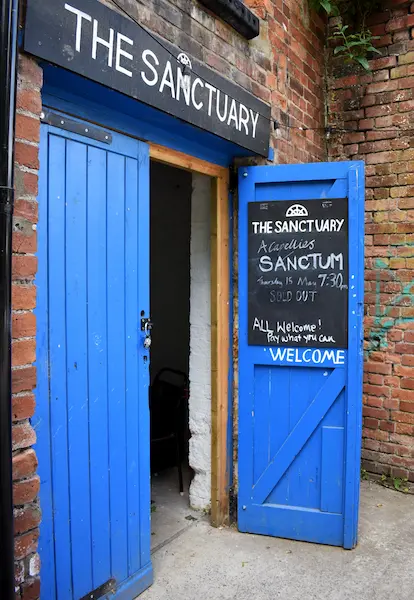
Is there going to be anything to make climbing more accessible for young people?
We would love to do something similar to NICAS (National Indoor Climbing Award Schemes) but it is such a small facility that I don’t know if we would be able to facilitate it. We do want to work with the Door and other charities and offer them access at a reduced price, so any surplus funding that we get will be redirected to giving free shoe rentals and subsidised entries for young people.

Coaching sessions will be available but we envision it being more of an intergenerational small space that will be a very nice place to be, if we build that culture into it, it becomes a unique and special space where people in their sixties, people in their teens and everyone in between will able to climb together and to mix and talk.
Eventually we could organise group trips to other centres — we would love to get a bus and maybe go to Wales and maybe one day run an annual trip to Fontainebleau, but that’s much further out in the future.
It would be great to create a climbing network in which no one is excluded and a wider demographic is included in that process.
How easy would it be to Replicate this model?
We made a lot of mistakes along the way because it’s the first time anyone’s done this, we were very naive but I think that naivety gave us the confidence to try to make it happen.
One thing we would probably do differently was where we were looking at crowdfunding platforms and the percentage cost they would take off, so we went for bank transfer in the first round of crowdfunding, that was too much of a barrier for some people, there was about £15,000 that was pledged but not transferred so if we had had that money on top of what we had crowdfunded we would have gone straight to building in 2024.
The insurance model took six months to develop but now that we’ve worked it through other communities can just take it and run with it.
We had a social researcher in part of the core group who developed a survey that was easy to answer. It generated enough data for us to understand what is affordable for people and where they were living through postcode data to try and figure out the best location to place it at.
Finding a location will still be a lot of work for anyone in any community, but we can share our knowledge on industrial units, what sort of space you’re looking at for this kind of scale and price.
We can also talk about the governance process and how we’ve managed to make that work. We now have about 90 people in the volunteer pool with different build groups and communications groups and people with expertise chipping in here and there. We have decided to keep the core group as 6-8 people. We can talk about what the decision making processes are like, what has worked and what hasn’t.
I think the capacity of the person leading it is the key, if you have the ability to be quite flexible you can be the main person that can pull it together while other volunteers are busy with their families and other commitments.
We’ve always talked about it as a comet where volunteers come on and work for a very intense, short period of time and then they go away for a bit and then come back so you have to work with that, you need at least one person who can be quite flexible and take more work when people are off and then do less and delegate when they are there.
If this can work in Stroud, and if we can simplify the process into a condensed outline — a “how-to” model in a booklet — then more communities can read it, replicate it, and then have it close to existing climbing gyms that can meet local needs and ultimately expand the climbing community.
If there was a defined process maybe this could be done in any community with minimum amounts of people.
How can you make the project more environmentally sustainable?
Initially we were going to buy only previously used hand holds and resurface them.
When the Warehouse [in Gloucester] was closing down we planned to buy most of what they were throwing away or selling on, but they are still deciding what they can reuse themselves at 270 so we’re not sure when or if that will happen.
So now we’re thinking about buying a mixture of new and used hand holds. We are very aware of the carbon footprint of making new holds but it is important that they are able to meet specific safety criteria.
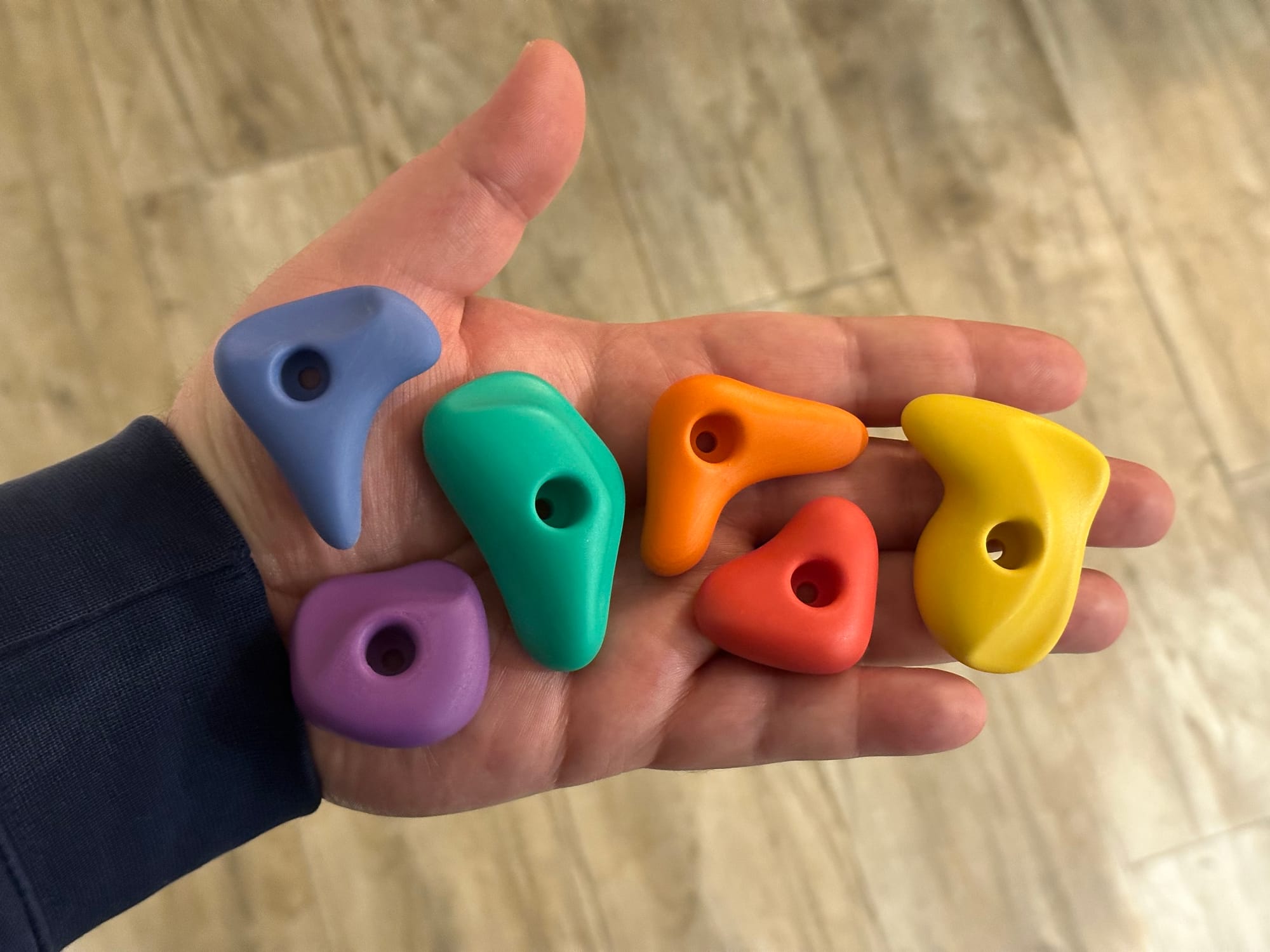
We are exploring how we can clean and resurface holds ourselves but we're not completely sure how we can manage this yet.
How can people support the project?
Other than contributing to our Crowdfunder, which is over 90% funded now, we have a WhatsApp community that if you have time or skills to offer you can join. Please email us at hello(at)climbingcommons(dot)org with your details if you would like to be more involved.
At the moment Brimscombe Mill are working on the upstairs section and they are looking for volunteers to come and help on Mondays and Friday so you can reach out to Ed through brimscombe-mill.org.uk.

We have enough people to build the space quite quickly but we are still looking for marketing and communications specialists, none of us are very good with Social Media.
Once the project starts, we would love to build up a bank of qualified intructors to be on a register and do sessions on a regular basis. We are also looking for an Events Organiser who can put together film screenings and maybe even parties — in parts of Europe, they have climbing wall "rave nights!"
The people who have come together to build this are not necessarily here to run it, and we are keen to pass it on to someone capable in a few year's time once it is properly established.
Where do you see the Climbing Commons in the future?
There is no growth imperative in the commons — we just want it to help meet a local need and for it to be replicable. If there is a product, it is what we have learned about how to establish a climbing gym and what other opportunities that learning offers up.
I imagine the Climbing Commons becoming, if successful, an idea distribution platform where we can help other communities to do this frictionlessly — to build a lot of these smaller gyms in places where people might be finding it difficult to access climbing whether that is because of the distance or the price and then having lots of these as an ecosystem alongside conventional climbing gyms and to position ourselves as increasing the climber population
We want to enable more people from different backgrounds and philosophies to enjoy the sport, come together and get to know each other on a human level, building a strong enough relationship that the polarisation and the division is healing from the grassroots up.
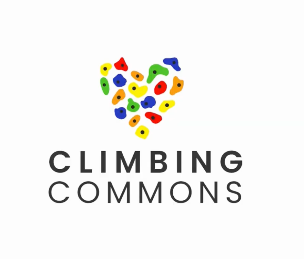
Support the Crowdfunder on SpaceHive

Stroud Commons
Stroud Commons is a group of Stroud residents who have come together to build the ‘commons’ economy in Stroud, and to document everything so that it can be implemented in other towns too.


Amplify Stroud is supported by Dialect rural writers collective. Dialect offers mentorship, encouragement and self-study courses as well as publishing.
You can find out more at https://www.dialect.org.uk/









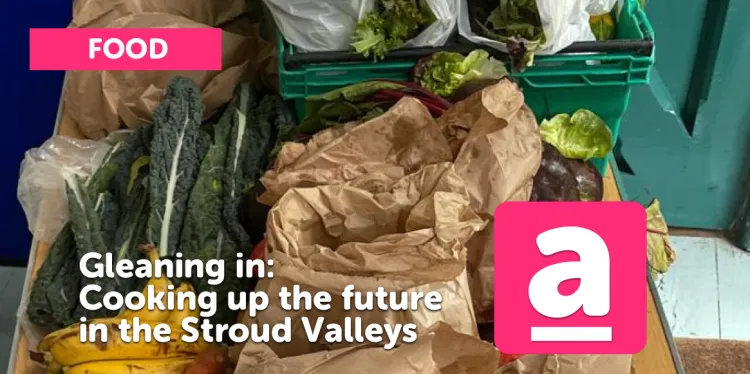
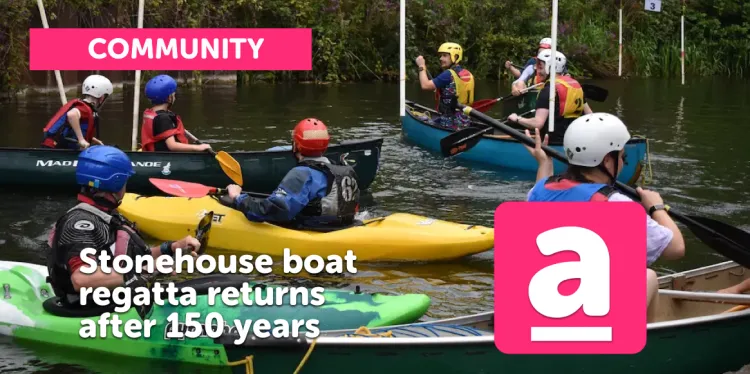

Member discussion